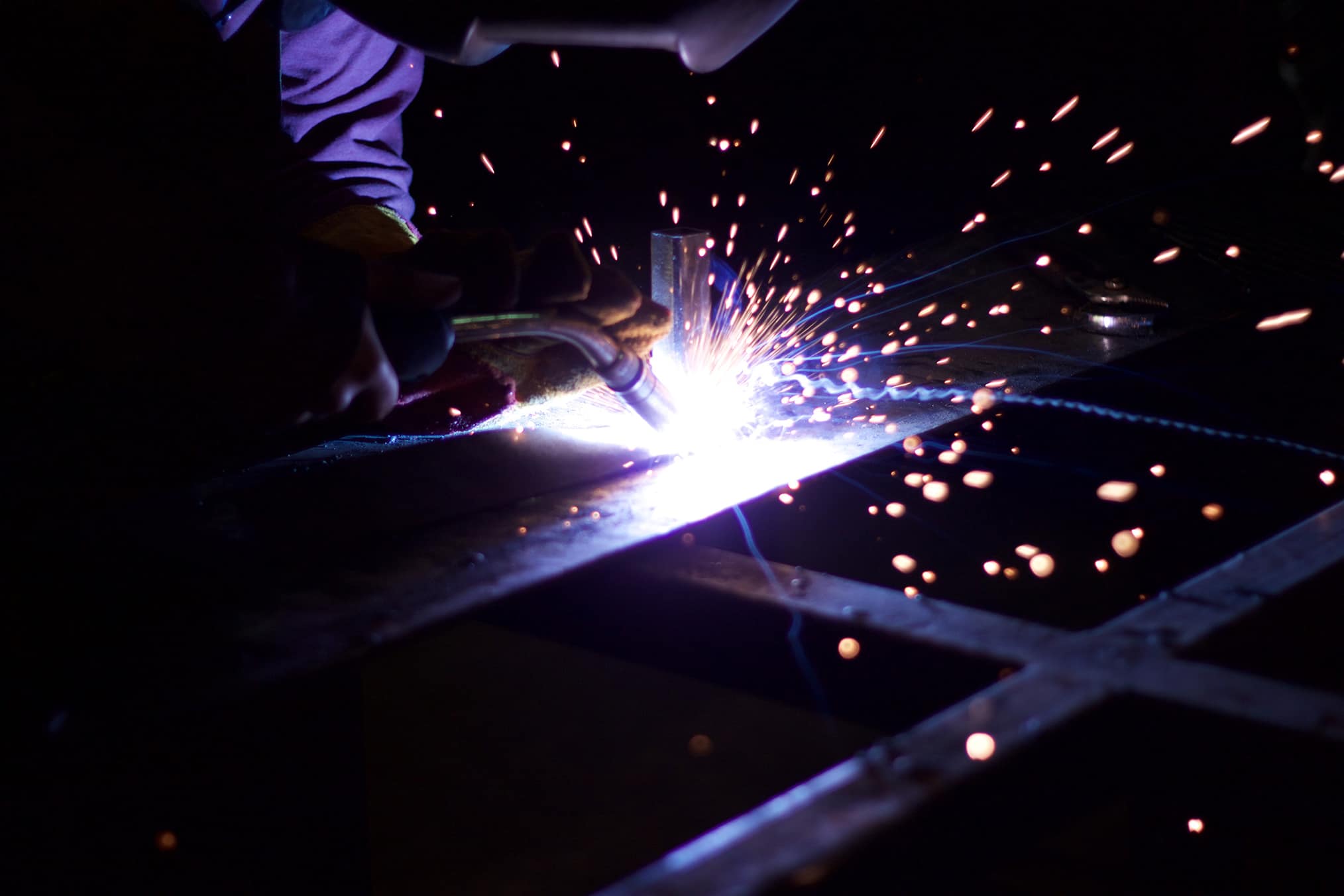- Estimates suggest that up to 500,000 workers are employed as welders in the US.
- Welding is the process by which two pieces of metal are melted together using intense heat from an oxy/acetylene flame or an electrical arc to form a permanent bond.
- Welders are exposed to a number of potential hazards such as heat and light radiation, fire hazards, harmful dust and hazardous fumes.
- Fumes can contain Zinc Oxide (ZnO), which causes the welder to experience flu-like symptoms (Metal Fume Fever). Fumes containing cadmium are highly toxic and can be fatal.
- Preventative measures include adequate ventilation and exhaust extraction systems.
- Workers must wear fire resistant protective clothing, work in a fire safe workplace and wear a welder’s mask with shade filters to protect against UV radiation.
Welding Overview
Welding is the process by which two pieces of the same metal (eg. mild steel, stainless steel, aluminum and cast iron) are fused together using intense heat to form a permanent bond. The process is different from soldering where the work pieces are joined by filler metal with a lower melting point. Many industries (eg. construction, engineering, automotive) use welding on a regular basis, exposing workers to potential hazards such as heat and light radiation, fire hazards, harmful dust and hazardous fumes. Estimates suggest that up to 500,000 workers are employed as welders in the US.
The most common methods employed are arc (electrical) and gas welding. In arc welding, two metals are joined using the intense heat created by an electrical arc where a consumable electrode melts into the joint. Tungsten Inert Gas (TIG) welding utilizes non-consumable electrodes, together with a filler rod applied by the welder, bathed in a mixture of inert gases (usually argon/CO2 or helium) that act as a shield to prevent oxidation. Metal Inert Gas (MIG) welding is similar, although the filler wire is continuously fed to the work by a motor as welding progresses. By contrast, gas welding uses heat generated by a flame from burning oxygen and acetylene to melt a filler rod into the joint.
Health Effects of Welding
Depending on the welding conditions, workers can be exposed to potentially hazardous fumes. Fumes can contain Zinc Oxide (ZnO), which causes the welder to experience flu-like symptoms (including headache, fever, chills and muscle aches) in a condition known as Metal Fume Fever often several hours after exposure. Fumes containing cadmium are highly dangerous and, after long and concentrated exposure, can cause kidney failure, severe respiratory disease and even death. Preventative measures include adequate ventilation and exhaust extraction. Due to the temperatures experienced and sparks generated, the workplace must be made fire safe. As well as protective clothing (eg. gauntlets and apron), a worker must wear a welder’s mask with suitable shade filters. Ultra Violet (UV) radiation can cause acute effects such as severe “sunburn” of the skin and “welder’s flash” or “arc eye” (photokeratitis) of the cornea of the eye.
OSHA Regulations
Employers are recommended to read the regulations and standards concerning welding. The welding pages on the OSHA website are an excellent place to start regarding mandatory requirements for ventilation, fire safety, Personal Protective Equipment (PPE) and its relationship to specific industries.
Essential links
OSHA health and safety topic: welding, cutting and brazing
OSHA. Welding, Cutting, and Brazing
National Institute for Occupational Safety and Health
NIOSH Topic: Welding and Manganese: Potential Neurologic Effects
Business Owner Briefing
American Welding Society: ANSI Z49. 1:2005 – Safety in welding, cutting and allied processes
Medical Director Review
Original research: Biological Monitoring of Hexavalent Chromium and Serum Levels of the Senescence Biomarker Apolipoprotein J/Clusterin in Welders. Alexopoulos et al.k 2008.
—
